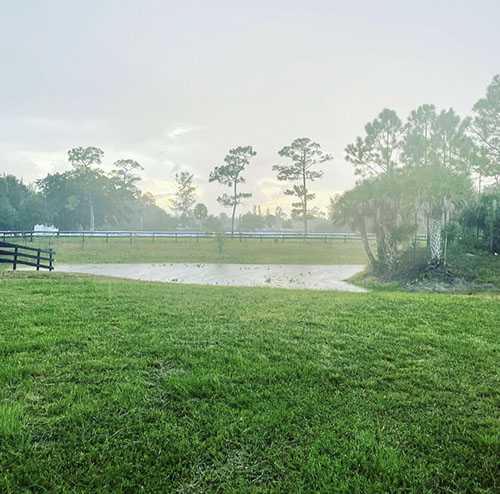
By Niles Sood
Palm Beach County is the largest agricultural district in Florida, leading the nation in the production of bell peppers, sugarcane and sweet corn. It also leads the state in various commodities, like lettuce, celery and rice, generating more than $1 billion in revenue.
As communities across Palm Beach County grapple with the pressures of modernization, the advent of artificial intelligence (AI) presents both a challenge and an opportunity for the area’s farming communities.
Across the nation, the rise of AI technology has created ripples of apprehension in various fields. However, the agricultural industry remains resilient in the face of change and may stand to gain from the development of AI. However, is it a viable tool for sustaining and enhancing the practices that underpin agricultural communities?
Manish Sood, co-owner of the 24 Karat Ranch in Loxahatchee Groves and an engineering alumnus of the Stevens Institute of Technology in New Jersey, believes so.
“AI should be approached as a tool to augment existing agricultural activities,” Sood said, adding that he has utilized the PictureThis app to identify weeds and invasive species of plants on the farm.
Indeed, invasive plants plague farms across Florida, reducing crop yields and harming the economy. A Florida Department of Agriculture publication reports that, “An established example is kudzu, which infests an estimated 7 million acres in the southeast and costs approximately $500 million in lost farm and timber production annually.” Because of Florida’s tropical climate and constantly transitional population, invasive species thrive in the state, resulting in state government expenditures of “$30 million… annually on invasive plant management on natural areas and waterways.”
Therefore, farmers here in Palm Beach County must take advantage of AI plant identification software to prevent the manifestation of invasive species on their properties and preserve their livelihoods.
Another agricultural problem that AI has the potential to address is plant disease. The USDA reports that, “Each year, plant diseases cost the global economy around $220 billion.” In Florida, citrus greening and citrus canker have resulted in the loss of thousands of citrus groves. This is because Florida law mandates chopping down any tree within 1,900 feet of a canker-infected plant, leading to the loss of otherwise healthy citrus trees.
Agrio, a plant health app available for smartphones, is a new AI software that offers hope in solving this problem. Agrio “identifies plant diseases and diagnoses plant problems.” Citrus farmers may be able to use this software to identify diseases before they spread and save their groves. Additionally, it is free to use, helping to reduce economic disparities between farmers with resources and those without.
However, the “digital divide” — the gap between those with access to technology and those without — is a broader problem that introduces an obstacle to the implementation of AI in agriculture. This is especially true in Palm Beach County, where many farmers lack access to broadband internet, digital literacy skills and the hardware to take advantage of the developments that have taken place in the AI field. This means that farmers with access to technology will likely outperform those without, which could exacerbate existing socioeconomic gaps.
As the world navigates this landscape of opportunity and obstacles, the future of AI in agriculture remains uncertain. However, inclusive solutions are needed to ensure that all farmers can benefit from technological advancements. In this journey, the road ahead may be complex, but within it lies the potential to reshape the agricultural landscape for the better.







